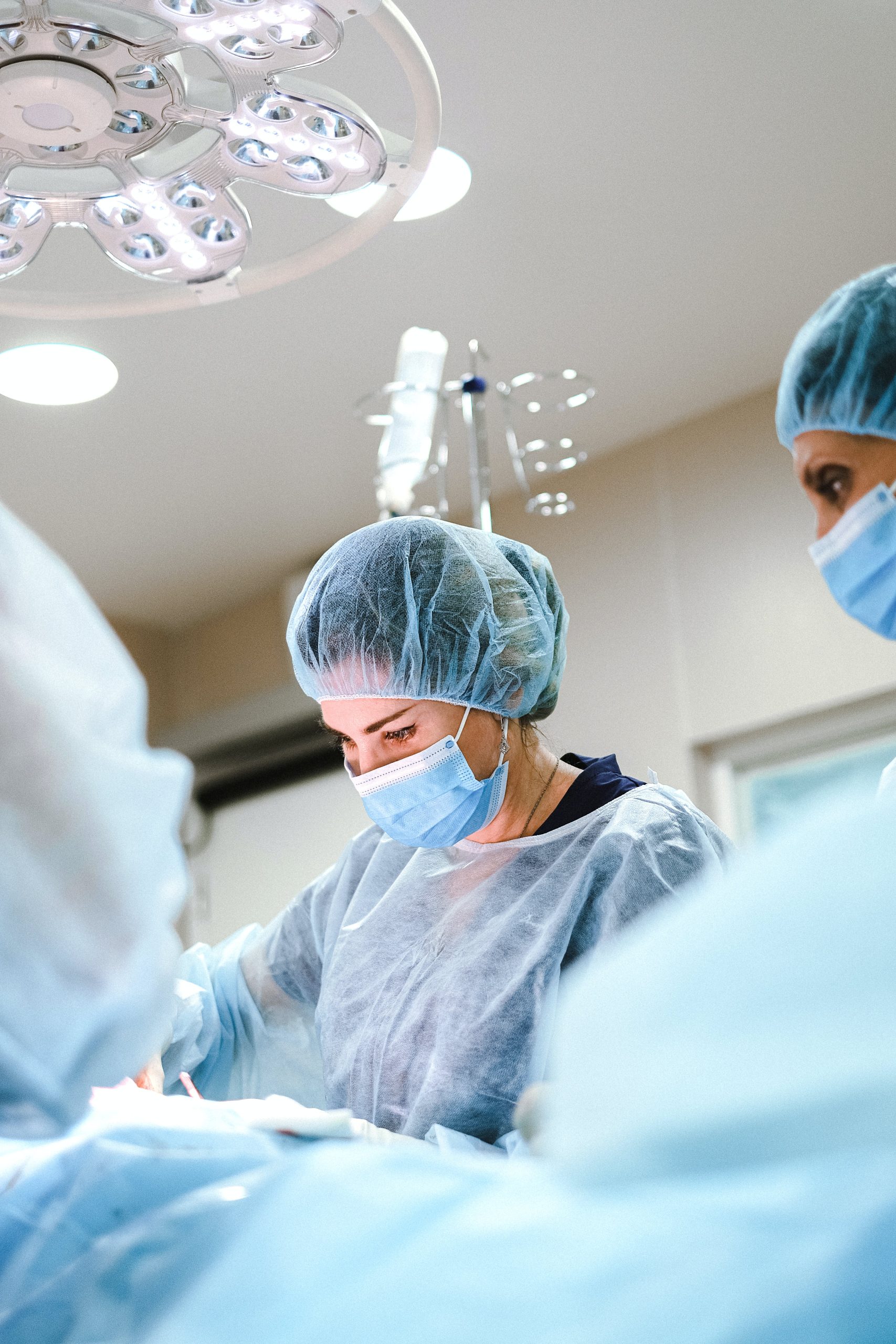Obstructive Sleep Apnea
Sleep Testing: Unlocking the Mysteries of Restorative Slumber
Struggling to get a good night’s sleep can be more than just a nuisance; it can be a sign of a significant underlying condition known as obstructive sleep apnea (OSA). In this comprehensive guide, we’ll explore OSA in detail,shedding light on its definition, root causes, prevalence, the crucial role of ENT specialists, available treatment options, surgical guidelines, post-treatment evaluation, potential surgical risks, and non-surgical alternatives.Whether you’re seeking answers for yourself or looking to expand your knowledge in the field of sleep medicine,this resource is your key to understanding and addressing obstructive sleep apnea.
1. What is Obstructive Sleep Apnea About?
Obstructive sleep apnea, often abbreviated as OSA, is a sleep disorder characterized by repeated interruptions in
breathing during sleep. These interruptions, known as apneas, occur when the muscles in the throat relax excessively, causing a temporary blockage of the upper airway. This results in disrupted airflow, leading to oxygen deprivation and frequent awakenings throughout the night. OSA not only robs individuals of restorative sleep but can also have a profound impact on their overall health and quality of life.

2. What Are the Causes of Obstructive Sleep Apnea?

OSA has multifactorial causes, including :
- Anatomical Factors : Physical attributes such as obesity, a narrow throat or airway, enlarged tonsils or adenoids, or a recessed chin can increase the risk of airway obstruction.
- Muscle Tone : Reduced muscle tone in the throat and tongue, often due to aging or alcohol and sedative use, can contribute to airway collapse.
- Neurological Factors : Conditions that affect the brain’s control over breathing, such as central sleep apnea (CSA), can lead to OSA.
- Lifestyle Factors : Smoking, alcohol consumption, and the use of sedatives can relax the muscles in the airway, making OSA more likely.
- Family History : A family history of OSA may increase one’s susceptibility to the condition, suggesting a genetic component.
3. How Common is Obstructive Sleep Apnea?
Obstructive sleep apnea is a prevalent sleep disorder that affects millions of individuals worldwide. Its prevalence is on the rise, primarily due to increasing rates of obesity, a significant risk factor for OSA. However, many cases remain undiagnosed, highlighting the importance of seeking professional evaluation and diagnosis.
4. What Can an ENT Specialist Do for You?
Ear, Nose, and Throat (ENT) specialists, also known as otolaryngologists, are at the forefront of diagnosing and managing OSA.
They offer a range of services, including :
ENT specialists perform a thorough evaluation of symptoms, medical
history, and physical examinations to diagnose OSA accurately.
Polysomnography (sleep study) is a diagnostic tool often used to monitor and assess sleep patterns, airflow, and oxygen levels during sleep.
Based on the diagnosis, ENT specialists provide personalized treatment options that
can include lifestyle modifications, medical management, surgical interventions, or a combination of these
approaches.
5.How Can Obstructive Sleep Apnea Be Treated?
Treatment strategies for OSA aim to alleviate symptoms, improve sleep quality, and reduce associated health risks.
Common treatment options include:

Lifestyle Modifications
Lifestyle changes such as weight loss, regular exercise, smoking cessation, and
limiting alcohol and sedative use can help alleviate OSA symptoms, particularly in mild cases.

Continuous Positive Airway Pressure (CPAP)
CPAP therapy involves using a machine that delivers a continuous stream of air through a mask to keep the airway open during sleep. It is one of the most effective treatments for moderate to severe OSA.

Oral Appliances
These devices, also known as mandibular advancement devices (MADs) or tongue
retaining devices (TRDs), can be prescribed to reposition the lower jaw or tongue to prevent airway collapse during sleep. They are typically used for mild to moderate OSA.
6. Guidelines for Surgery
Surgical intervention for OSA is considered when conservative treatments prove ineffective, and the underlying anatomical issues necessitate correction. Common surgical procedures performed by ENT specialists for OSA include:
- Uvulopalatopharyngoplasty (UPPP) : UPPP is a surgical procedure that removes excess tissue from the throat, including the uvula and parts of the soft palate, to widen the airway.
- Genioglossus Advancement (GA) : GA repositions the tongue attachment to the lower jaw, preventing airway collapse during sleep.
- Hyoid Suspension : This procedure repositions the hyoid bone to stabilize the airway and prevent blockage.
- Maxillomandibular Advancement (MMA) : MMA involves repositioning the upper and lower jaws to enlarge the airway space and reduce airway collapse.
7. Evaluation & Follow Up for Treatment
After initiating treatment for OSA, regular evaluations and follow-up appointments are crucial. These visits serve several purposes:
- Assessing Treatment Efficacy : Follow-up evaluations allow healthcare providers to assess the effectiveness of the chosen treatment and make necessary adjustments.
- Monitoring Adherence to Therapy : Monitoring patient adherence to therapies like CPAP or oral appliances is essential for achieving optimal results.
- Reviewing Symptoms : Follow-up visits provide an opportunity to discuss any changes in symptoms or side effects of treatment.
- Providing Support and Education : Healthcare providers offer ongoing support and education to help patients fectively manage their OSA.
8. Risks of Surgery
As with any surgical procedure, surgical interventions for OSA carry potential risks and complications. The specific risks can vary depending on the type of surgery and individual health factors.
Common surgical risks may include :
- Infection : Surgical sites can become infected, requiring treatment with antibiotics.
- Bleeding : Some surgical procedures may carry a risk of postoperative bleeding, necessitating medical attention and intervention.
- Discomfort and Pain : Pain and discomfort are common after surgery, typically managed with medication and proper postoperative care.
- Scarring : Surgical scars may develop, but their visibility can often be minimized through precise surgical techniques.
- Recovery Period : Depending on the type of surgery, the recovery period may vary, with some procedures requiring more extended downtime than others.
9. Alternatives to Surgery
For individuals who are not suitable candidates for surgery or prefer non-surgical approaches, several alternative treatments for OSA exist:
- Positional Therapy : Some people experience OSA predominantly in specific sleeping positions. Positional therapy involves techniques or devices that encourage sleeping in positions where the airway is less likely to collapse.
- Nasal Devices : Nasal devices such as external nasal dilators or adhesive strips can help improve nasal airflow and reduce snoring in some cases.
- Inspire Therapy : Inspire therapy is a surgically implanted device that stimulates the hypoglossal nerve to prevent airway obstruction during sleep. It is an option for select patients with moderate to severe obstructive sleep apnea.

Understanding obstructive sleep apnea, its causes, and the available treatment options is essential for those affected by this condition. Seeking evaluation and guidance from experienced ENT specialists can lead to effective management and a path towards restful slumber. For in-depth information and insights from leading clinicians in the field of sleep medicine, please visit Nuffield Sleep.
